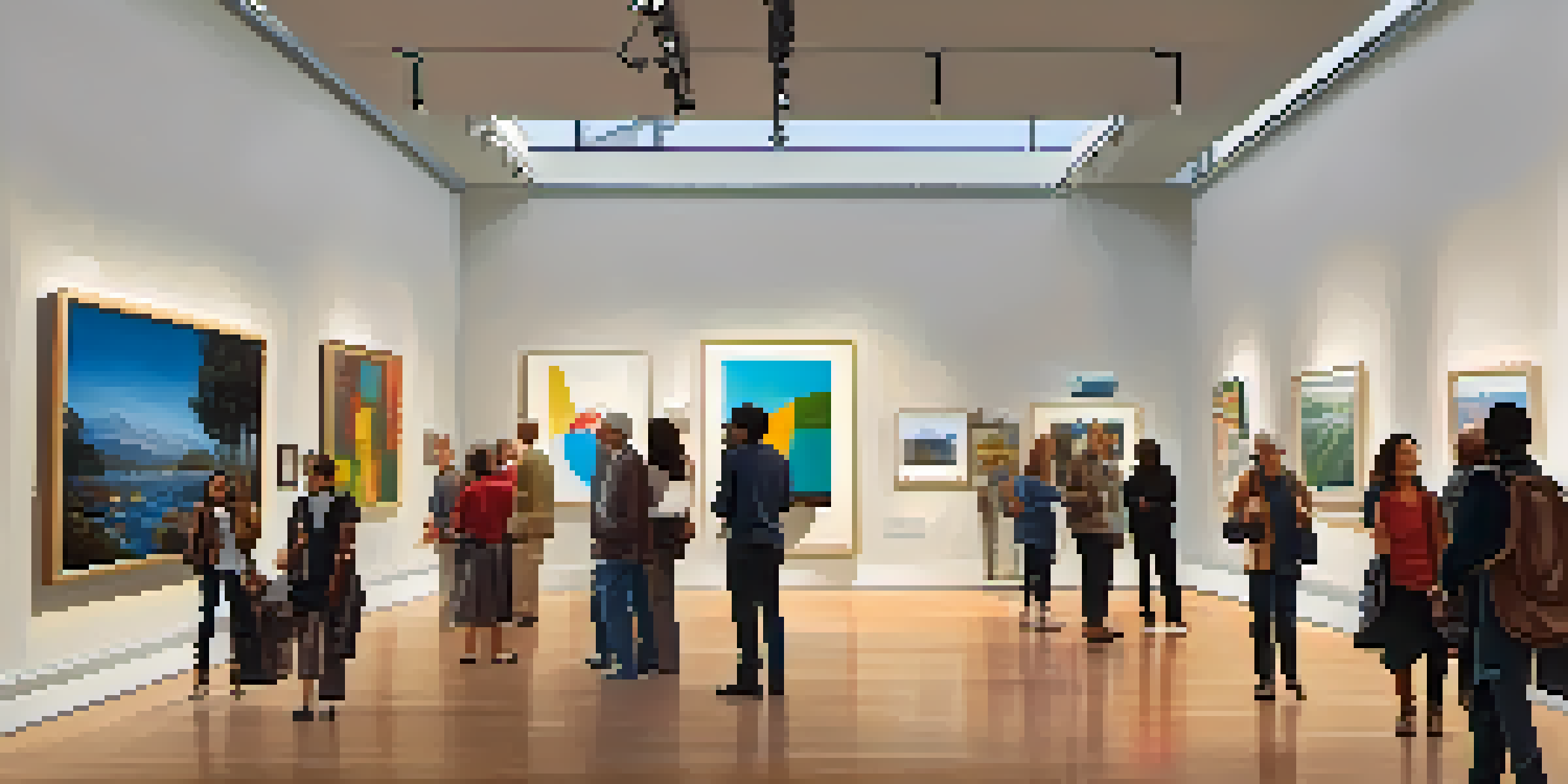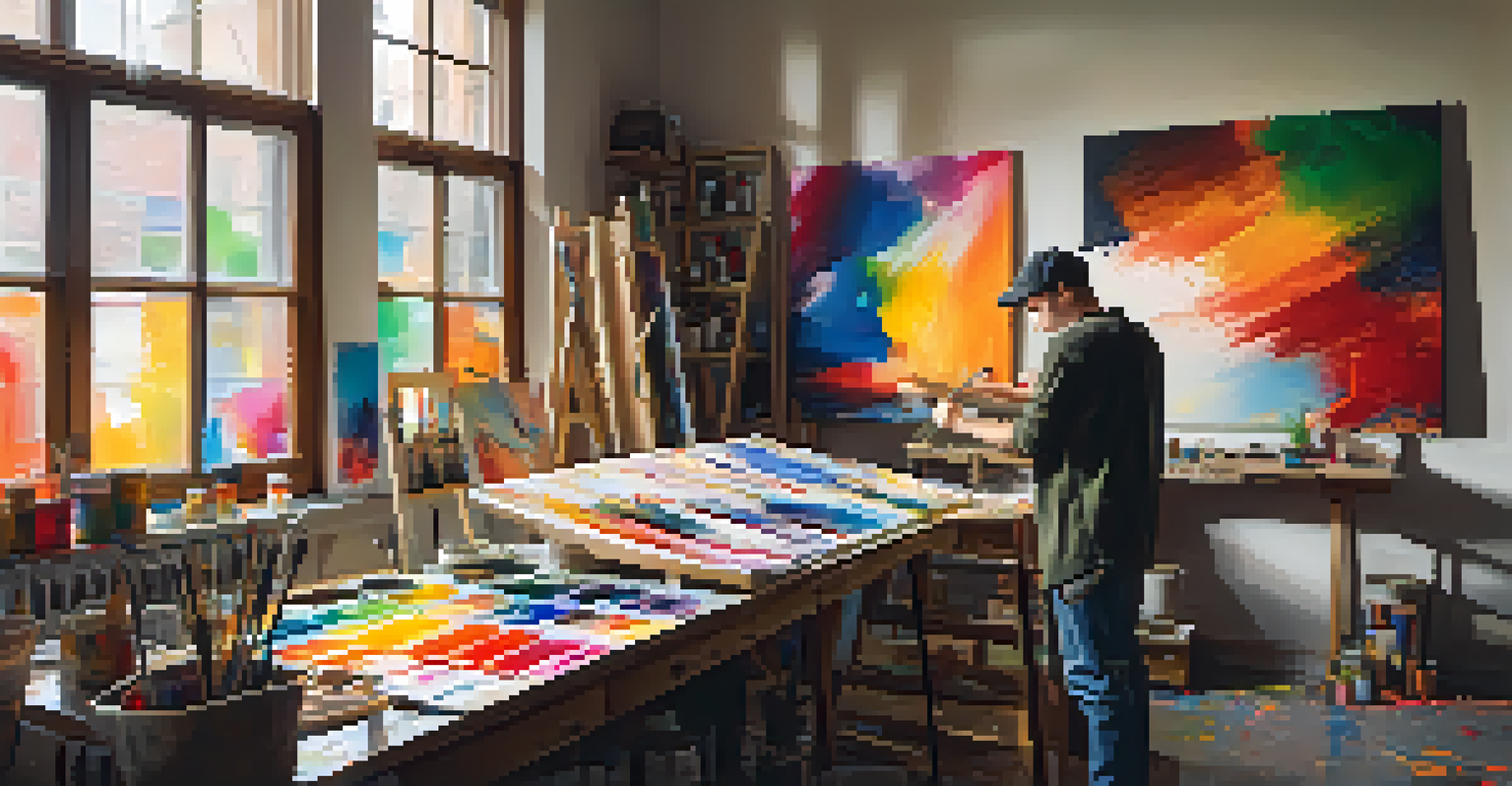Art Critics as Cultural Gatekeepers in the Art World

Understanding the Role of Art Critics in Society
Art critics play a crucial role in shaping public perceptions of art. They analyze and interpret artworks, providing insights that can enhance our appreciation and understanding. Just as a compass guides a traveler, critics help navigate the often complex landscape of the art world.
Art criticism is an invitation to consider art as a lens through which we can examine our cultural and personal narratives.
These professionals assess not only the aesthetic value of art but also its cultural significance. They delve into the historical context, the artist's intentions, and the societal implications of each piece. This multifaceted approach allows them to serve as informed voices in the discourse surrounding contemporary art.
Moreover, art critics often bridge the gap between artists and audiences. By articulating what makes a work compelling or important, they invite more people to engage with art, fostering a deeper connection to culture and creativity.
The Power of Influence: Critics as Cultural Gatekeepers
Critics wield significant influence over which artworks gain recognition and which fade into obscurity. Their reviews can propel an artist's career or determine the success of an exhibition. This power positions them as gatekeepers, as their opinions can dictate what gets celebrated in the art community.

For example, a glowing review from a respected critic can lead to increased sales, media attention, and opportunities for the artist. Conversely, a negative critique might discourage potential buyers or collectors. This dynamic raises questions about the subjective nature of art and the criteria used by critics to evaluate it.
Art Critics Shape Public Perception
Art critics analyze and interpret artworks, helping audiences appreciate their aesthetic and cultural significance.
Ultimately, critics must be aware of their responsibility and the impact their words can have. By championing diverse voices and lesser-known artists, they can help democratize the art world and expand the narrative beyond mainstream perspectives.
The Evolution of Art Criticism in the Digital Age
The rise of digital platforms has transformed the landscape of art criticism. Today, anyone with an internet connection can share their thoughts on art through blogs, social media, or video content. This democratization allows for a wider range of voices, but it also complicates the role of traditional critics.
Critics have the power to shape public perception and influence the trajectory of an artist's career.
As more people engage with art online, the definition of who qualifies as a critic has expanded. Influencers and amateur reviewers can gather significant followings, sometimes rivaling established critics. This shift challenges traditional norms and raises questions about credibility and expertise in art criticism.
In this new environment, established critics must adapt by embracing digital tools and platforms. By doing so, they can reach broader audiences and remain relevant in a rapidly changing landscape, ensuring that their insights continue to influence the art world.
The Intersection of Art, Culture, and Identity
Art is inherently tied to culture and identity, and critics often explore these connections in their analyses. They examine how artworks reflect societal values, historical contexts, and personal narratives, making art criticism an essential tool for understanding culture. This exploration can reveal hidden meanings and challenge dominant narratives.
For instance, critics may analyze how contemporary artists address social issues such as race, gender, and class. By highlighting these themes, critics can foster conversations that resonate beyond the art itself, promoting a deeper understanding of the cultural dynamics at play.
Critics as Cultural Gatekeepers
Critics influence which artworks gain recognition and can champion diverse voices, promoting inclusivity in the art world.
As cultural gatekeepers, critics have the power to amplify marginalized voices and promote inclusivity in the art world. Their critiques can encourage audiences to engage with diverse perspectives, ultimately enriching the cultural landscape.
The Ethics of Critique: Navigating Subjectivity
Art criticism is inherently subjective, and this raises ethical considerations for critics. They must balance personal taste with a commitment to fairness and objectivity. This can be particularly challenging when dealing with controversial or challenging works that may provoke strong reactions.
Critics have a responsibility to acknowledge their biases and the influences that shape their perspectives. Transparency in the critique process can help audiences understand the lens through which the critic is viewing the artwork. This openness fosters trust and encourages dialogue about the complexities of art.
Additionally, critics should strive to create space for diverse interpretations. By recognizing that there is no single 'right' way to understand art, they can promote a more inclusive and dynamic art discourse.
Art Criticism as a Tool for Cultural Reflection
Art criticism serves not only to evaluate individual artworks but also to reflect the cultural zeitgeist. Critics often engage with current events, societal shifts, and emerging trends, using art as a lens through which to examine the world. This reflection can spark conversations and inspire action.
For example, during times of social upheaval, art criticism can illuminate how artists respond to these challenges. Critics can highlight works that address pressing issues, encouraging audiences to reflect on their own beliefs and values. This intersection of art and social commentary underscores the importance of critique in shaping cultural narratives.
Digital Age Transforms Art Criticism
The rise of digital platforms has broadened the definition of art critics, challenging traditional norms and enhancing accessibility.
Through thoughtful analysis, critics can elevate dialogues around critical issues, making art a powerful vehicle for cultural reflection and change.
Future Directions: The Role of Critics in a Changing Art World
As the art world continues to evolve, so too will the role of art critics. They will need to adapt to new trends, technologies, and audience expectations. Staying relevant in a rapidly shifting landscape requires critics to be open-minded and forward-thinking.
Emerging trends such as immersive art experiences and virtual exhibitions present both challenges and opportunities for critics. They must find ways to engage with these innovations while maintaining their core mission of providing insightful analysis. This adaptability will be key to their continued relevance.

Moreover, the future of art criticism will likely involve greater collaboration with artists, curators, and audiences. By fostering these relationships, critics can contribute to a more vibrant and inclusive art community, ensuring that their voices remain integral to the ongoing conversation about art and culture.